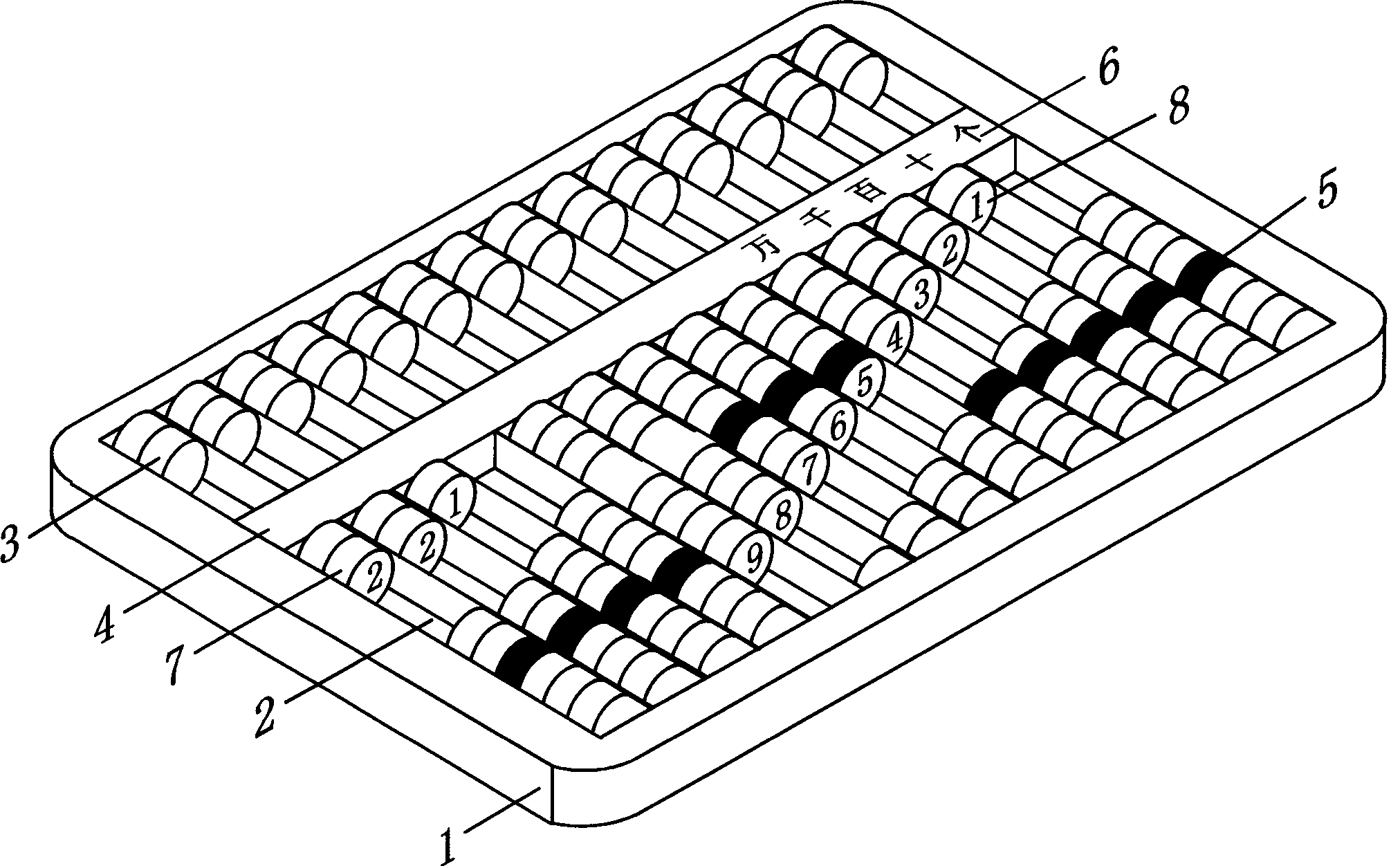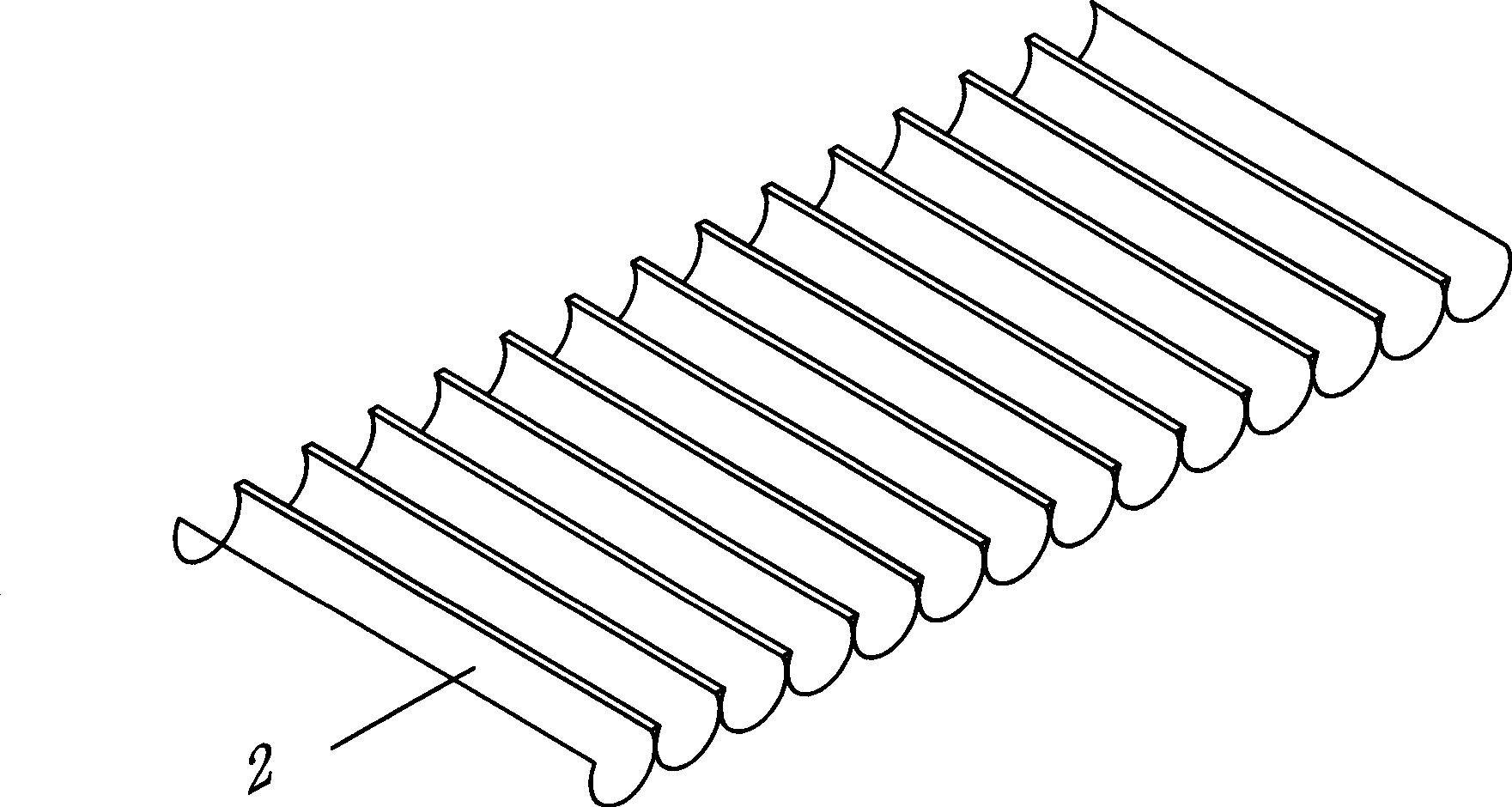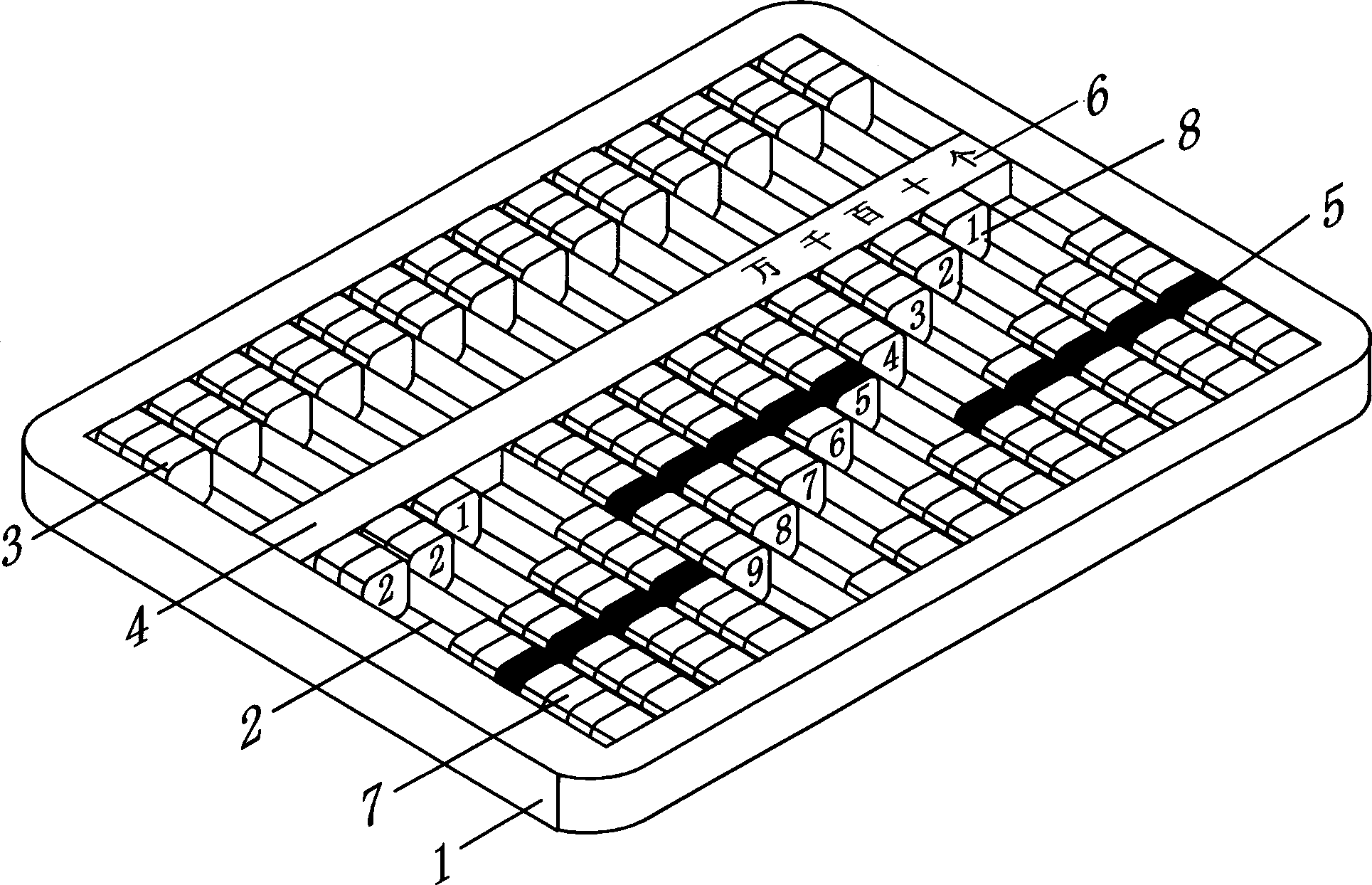Box type direct adding and subtracting number-display abacus
A box-type and abacus technology, which is applied in the field of learning tools, can solve problems such as discouraging schoolchildren from learning mathematics, easy forgetting, and difficulty in displaying learning functions, and achieves the effect of easy learning and mastering, and flexible rules
- Summary
- Abstract
- Description
- Claims
- Application Information
AI Technical Summary
Problems solved by technology
Method used
Image
Examples
Embodiment 1
[0074] like figure 1 Shown: the box-type direct addition and direct subtraction display digital abacus comprises a bottom box (1), a guide rail (2), an upper bead (3), a lower bead (7) and a beam (4). The bottom box (1) is a box-type structure with a closed bottom surface. There are 14 guide rails (2) parallel to each other in the bottom box (1). Beads matching the shape of the guide rails (2) are all stuck in the guide rails (2); the crossbeam (4) divides the beads into the bead structural form of "upper two and lower nine", that is, the upper two upper beads (3), Nine lower beads (7) below, one of the upper beads (3) represents 5, and one of the lower beads (7) represents 1; the lower beads (7) have two bottom surfaces, and there are two bottom surfaces on the bottom surface to match the shape of the gear lever (2). Through hole, mark " 1~9 " nine numerals successively on the bottom surface (8) of nine lower beads (7) of every grade. Numeral "0" is marked on the inside of...
Embodiment 2
[0076] like figure 2 Shown: the box-type direct addition and direct subtraction display digital abacus comprises a bottom box (1), a guide rail (2), an upper bead (3), a lower bead (7) and a beam (4). The bottom box (1) is a box-type structure with a closed bottom surface. There are 14 guide rails (2) parallel to each other inside the bottom box (1). , each guide rail (2) is stuck with beads that match the shape of the guide rail (2); the crossbeam (4) divides the beads into a structure of "upper three, lower nine", that is, the upper three upper beads (3 ), nine lower beads (7) below, one of the upper beads (3) represents 5, and one of the lower beads (7) represents 1; the lower beads (7) have two bottom surfaces, and the bottom surfaces have Matched through holes are marked with nine numbers of "1~9" successively on the bottom surface (8) of the nine lower beads (7) of each gear. Numeral "0" is marked on the position corresponding to the number on the lower bead (7) on th...
PUM
 Login to View More
Login to View More Abstract
Description
Claims
Application Information
 Login to View More
Login to View More - Generate Ideas
- Intellectual Property
- Life Sciences
- Materials
- Tech Scout
- Unparalleled Data Quality
- Higher Quality Content
- 60% Fewer Hallucinations
Browse by: Latest US Patents, China's latest patents, Technical Efficacy Thesaurus, Application Domain, Technology Topic, Popular Technical Reports.
© 2025 PatSnap. All rights reserved.Legal|Privacy policy|Modern Slavery Act Transparency Statement|Sitemap|About US| Contact US: help@patsnap.com



